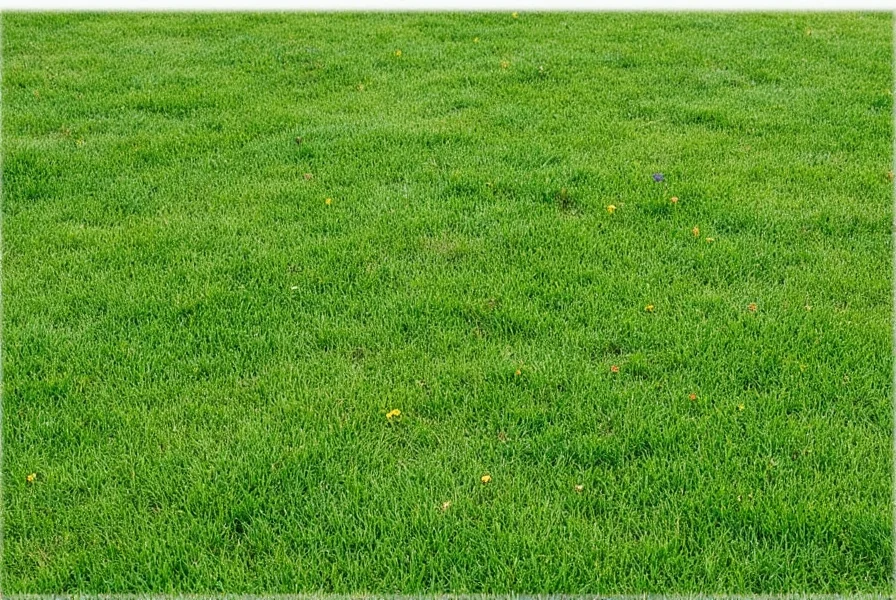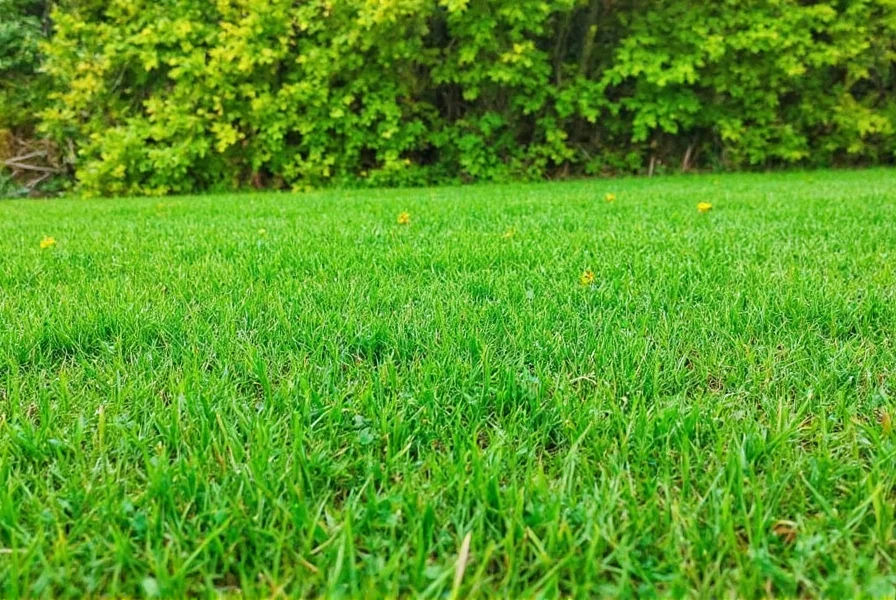As traditional turf grass faces growing environmental scrutiny, micro clover has emerged as a practical solution for sustainable landscaping. This specialized cultivar of white clover offers distinct advantages over both conventional lawns and standard white clover varieties. Understanding its unique characteristics helps homeowners make informed decisions about lawn alternatives that reduce water consumption, eliminate synthetic fertilizers, and support local ecosystems.
What Makes Micro Clover Different From Regular White Clover?
Micro clover (often sold as “Pipolina” or “Pirouette” cultivars) represents a significant improvement over traditional white clover for lawn applications. The key differences lie in its growth habit and visual characteristics:
| Characteristic | Micro Clover | Standard White Clover |
|---|---|---|
| Height | 4-8 inches | 8-12 inches |
| Leaf Size | Smaller, finer leaves | Larger, more prominent leaves |
| Flowering | Fewer, smaller flowers | More frequent, larger flower heads |
| Mowing Frequency | Minimal (2-3 times/year) | Regular (weekly) |
| Lawn Integration | Blends seamlessly with grass | Creates noticeable patches |
These differences make micro clover particularly suitable for homeowners who want the benefits of clover without the “weedy” appearance sometimes associated with standard varieties. The reduced flowering is especially important for those concerned about bees becoming overly concentrated in specific areas.
Environmental Benefits of Micro Clover Lawns
Micro clover's ecological advantages form a compelling case for its adoption as a sustainable lawn alternative. As a legume, it performs nitrogen fixation directly in the soil, eliminating the need for synthetic fertilizers. This natural process occurs through a symbiotic relationship with rhizobia bacteria in its root system, converting atmospheric nitrogen into plant-available forms.
Drought tolerance represents another significant benefit. Micro clover maintains its green color during dry periods when traditional grasses would go dormant, reducing water consumption by up to 50% compared to conventional lawns. Its deep root system (reaching 8-12 inches) accesses moisture unavailable to shallow-rooted turf grasses.
For environmentally conscious gardeners, micro clover supports biodiversity by providing nectar for pollinators while requiring no pesticides. Unlike monoculture grass lawns, clover lawns create micro-habitats that support beneficial insects and improve overall soil health through organic matter accumulation.
Establishing a Micro Clover Lawn: Step-by-Step Guide
Successful micro clover establishment requires proper preparation and timing. The optimal planting window varies by climate zone but generally falls in early spring (after last frost) or early fall (6-8 weeks before first frost). These periods provide moderate temperatures and adequate moisture for seed germination.
For new installations, prepare the soil by removing existing vegetation and loosening the top 2-3 inches of soil. Micro clover seeds are small and need good soil contact but shouldn't be buried deeply. The recommended seeding rate is 1-2 pounds per 1,000 square feet when planting pure stands, or 1/2 pound per 1,000 square feet when overseeding existing lawns.
Keep the seeded area consistently moist for 7-10 days until germination occurs. Unlike grass seeds, micro clover doesn't require deep watering initially – light, frequent watering works best. Once established, gradually reduce watering frequency to encourage deeper root growth. For those considering micro clover overseeding existing lawns, mow the grass short and rake to create soil contact before seeding.
Maintenance Requirements for Micro Clover Lawns
Maintenance for micro clover lawns differs significantly from traditional turf grass. The most notable difference is reduced mowing requirements – micro clover typically needs mowing only 2-3 times per season compared to weekly for most grasses. When mowing, set your mower to 3-4 inches to avoid scalping the plants.
Fertilization needs are minimal due to nitrogen fixation, though a light application of phosphorus-rich organic fertilizer in spring can support root development. Avoid high-nitrogen fertilizers, which encourage grass growth at the expense of clover. Micro clover tolerates moderate foot traffic but may develop thin spots in high-traffic areas – overseeding these areas in fall helps maintain density.
Weed control works differently with micro clover. The dense growth habit naturally suppresses many weeds, but broadleaf weeds may still appear. Hand-pulling works best for spot treatment, as most broadleaf herbicides will damage clover. For those seeking low maintenance lawn alternatives, micro clover's natural weed suppression reduces the need for chemical interventions.
Climate and Soil Considerations for Micro Clover Success
Micro clover performs best in USDA hardiness zones 3-10, demonstrating surprising cold tolerance down to -30°F when established. While it prefers full sun (6+ hours daily), it tolerates partial shade better than most turf grasses, making it suitable for areas with dappled sunlight beneath trees.
Soil pH requirements fall between 6.0-7.0, though micro clover adapts to a wider range than many grasses. It grows well in various soil types but performs best in well-drained loams. In heavy clay soils, amending with organic matter improves establishment success. For gardeners in arid regions, micro clover's drought tolerance makes it an excellent choice for water-conscious landscaping.
One consideration for potential users is micro clover's performance in extreme heat. While it handles moderate summer temperatures well, extended periods above 90°F may cause temporary dormancy. However, it typically recovers quickly when temperatures moderate, unlike many cool-season grasses that suffer permanent damage.

Addressing Common Micro Clover Concerns
Several concerns often arise when homeowners consider micro clover lawns. The bee question tops the list – while micro clover produces fewer flowers than standard varieties, it still attracts pollinators. However, the smaller flower size and reduced nectar production mean fewer bees visit compared to other clover types. Mowing before full bloom further minimizes bee activity.
Pet safety represents another common inquiry. Micro clover is non-toxic to dogs and cats, making it a pet-friendly lawn alternative. Some pet owners report their animals enjoy nibbling the leaves, which contain beneficial nutrients. Unlike chemical-treated grass lawns, micro clover poses no toxicity risk from pesticides or synthetic fertilizers.
For those worried about micro clover taking over their entire yard, proper management prevents excessive spread. Unlike aggressive ground covers, micro clover grows vegetatively through stolons but doesn't become invasive. Edging and regular mowing contain its spread effectively, allowing homeowners to maintain defined garden beds and lawn areas.
Cost Analysis: Micro Clover vs Traditional Lawn Options
When evaluating micro clover for lawns, consider both initial and long-term costs. Seed costs range from $20-$40 per pound, with most homeowners needing 1-2 pounds for average-sized yards. While this represents a higher initial investment than grass seed, the long-term savings are substantial.
Eliminating fertilizer applications saves $50-$100 annually for average lawns. Reduced watering needs cut irrigation costs by 30-50%. Less frequent mowing translates to fuel savings and extended mower life. When calculating total cost of ownership over five years, micro clover typically proves more economical than maintaining a conventional lawn, especially in regions with water restrictions or high fertilizer costs.
Conclusion: Is Micro Clover Right for Your Lawn?
Micro clover presents a compelling alternative for homeowners seeking sustainable, low-maintenance lawn solutions. Its combination of drought tolerance, natural fertilization, and environmental benefits makes it particularly suitable for eco-conscious gardeners. While it may not provide the perfectly uniform appearance of manicured turf grass, it offers a practical compromise between aesthetics and sustainability.
For those transitioning from traditional lawns, a gradual approach works best – overseed existing grass with micro clover over 1-2 seasons rather than complete renovation. This allows time to assess compatibility with your specific conditions while maintaining lawn functionality. As water conservation becomes increasingly important and environmental awareness grows, micro clover represents a smart, forward-thinking choice for modern landscaping needs.
Does micro clover attract more bees than traditional grass lawns?
Micro clover does attract some bees due to its small white flowers, but significantly fewer than standard white clover varieties. The reduced flowering characteristic of micro clover means less nectar production, resulting in minimal bee activity. Mowing before flowers fully open further reduces bee visits, making it suitable for most residential settings without creating significant bee concentration.
How often do I need to water a micro clover lawn compared to traditional grass?
Micro clover requires approximately 30-50% less water than traditional cool-season grasses. While established turf grass typically needs 1-1.5 inches of water per week during peak growing season, micro clover maintains green color with just 0.5-0.75 inches weekly. Its deep root system accesses moisture unavailable to shallow-rooted grasses, and it naturally goes dormant during extreme drought rather than browning, recovering quickly when water becomes available.
Can micro clover handle heavy foot traffic in play areas?
Micro clover tolerates moderate foot traffic but may develop thin spots in high-traffic areas like play zones or pathways. For areas with heavy use, consider blending micro clover with fine fescue grasses (20-30% clover, 70-80% grass) to improve wear tolerance. Alternatively, establish defined pathways using stepping stones or mulch in high-traffic zones while maintaining micro clover in surrounding lawn areas.
Will micro clover take over my entire yard and garden beds?
Micro clover spreads vegetatively through stolons but doesn't become invasive like some ground covers. It grows more slowly than standard white clover and can be easily contained with regular edging. Unlike aggressive spreaders, micro clover respects boundaries between lawn areas and garden beds when maintained properly. Mowing the edges regularly prevents unwanted spread into flower beds or other designated areas.
How does micro clover perform in shady areas compared to traditional grass?
Micro clover tolerates partial shade (3-6 hours of sunlight daily) better than most cool-season grasses. While it prefers full sun, it maintains reasonable density in dappled shade beneath trees where Kentucky bluegrass or ryegrass would thin out. However, in deep shade (less than 3 hours of direct sun), even micro clover struggles, and shade-tolerant alternatives like certain ferns or hostas might be more appropriate for those specific areas.











 浙公网安备
33010002000092号
浙公网安备
33010002000092号 浙B2-20120091-4
浙B2-20120091-4